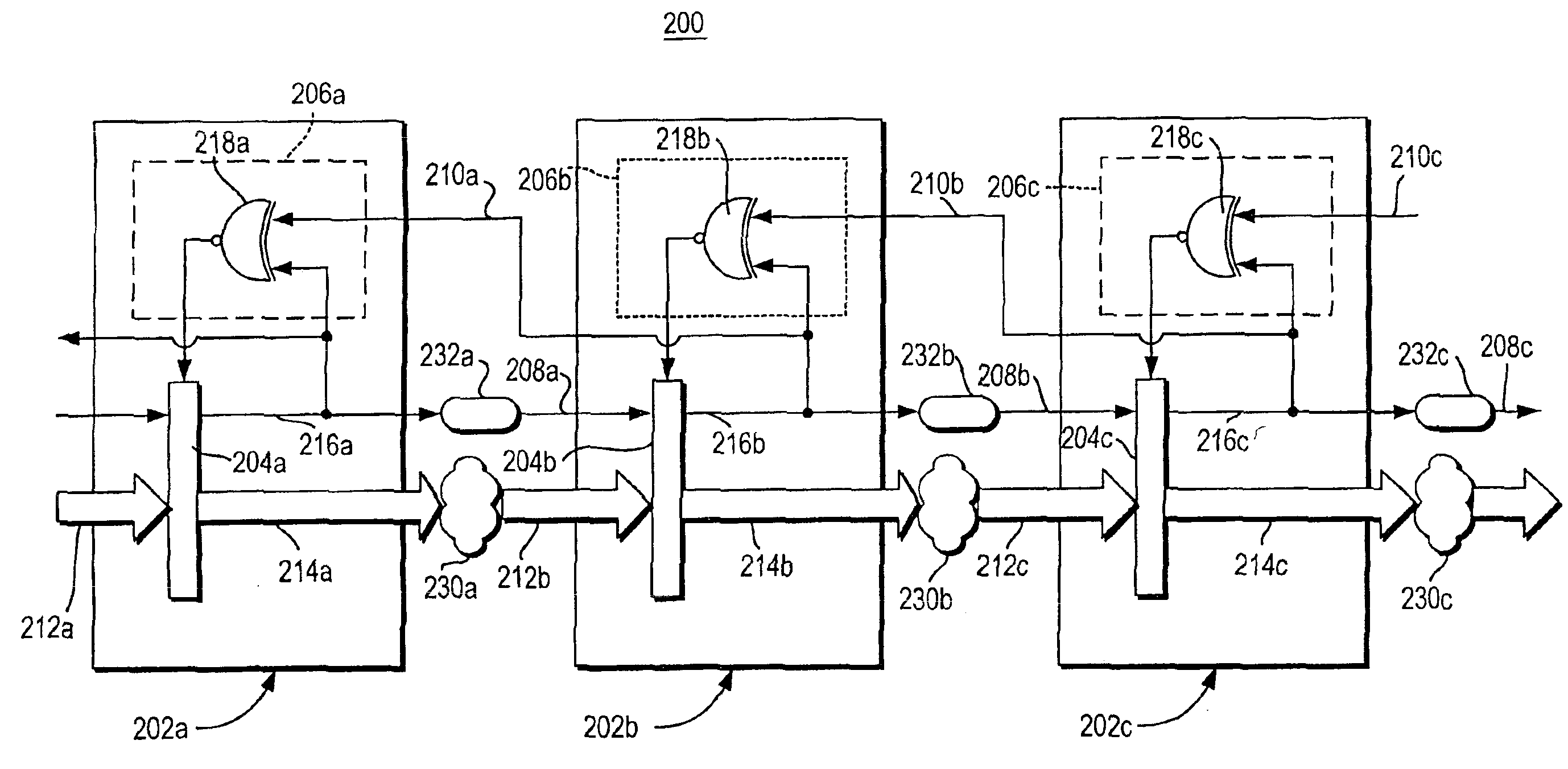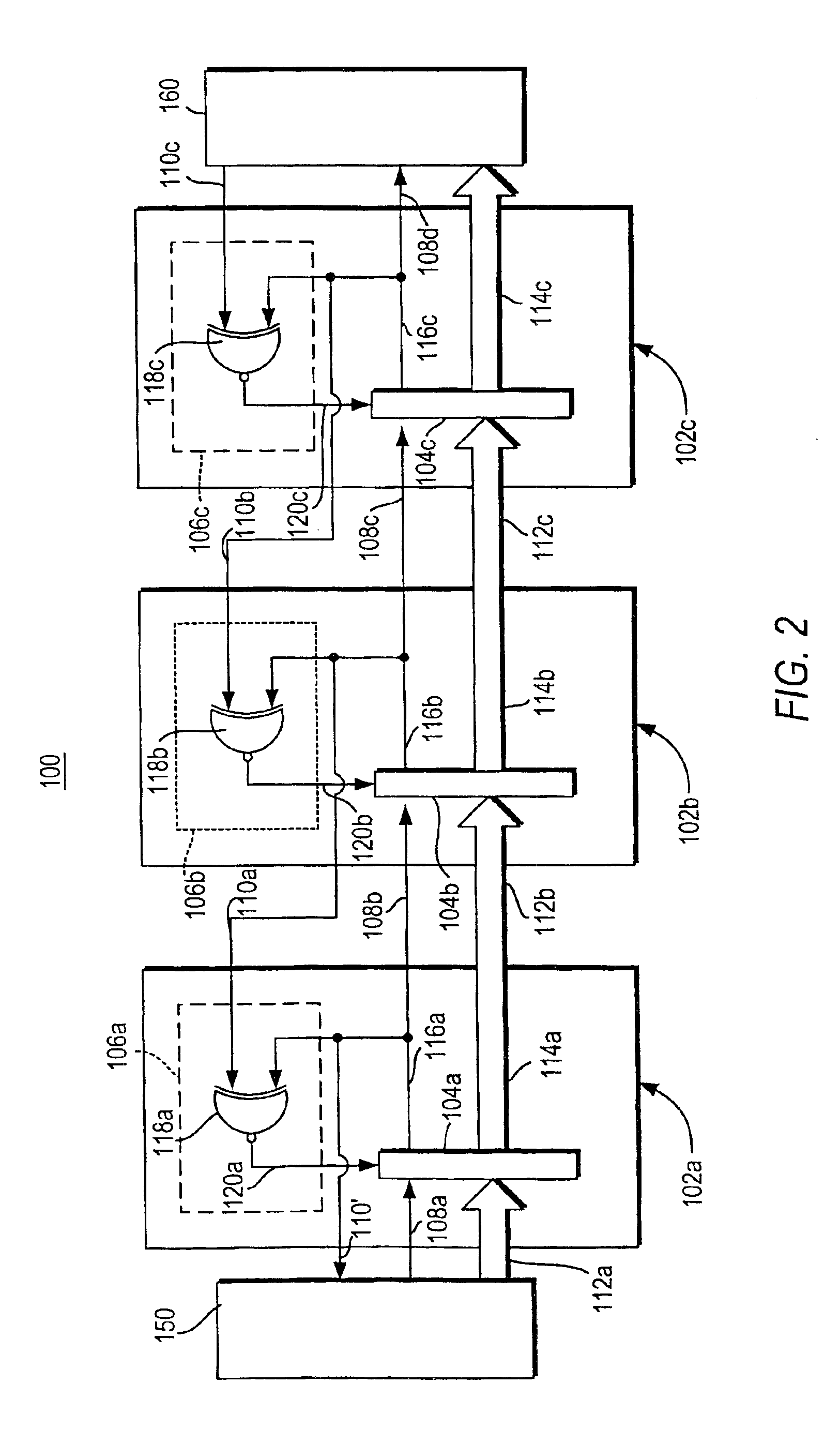Asynchronous pipeline with latch controllers
a technology of latch controller and asynchronous pipeline, which is applied in the direction of logic circuit, pulse technique, instruments, etc., can solve the problems of complex timing constraints, high design effort, and high vulnerability to process, temperature and voltage variations
- Summary
- Abstract
- Description
- Claims
- Application Information
AI Technical Summary
Benefits of technology
Problems solved by technology
Method used
Image
Examples
example
[0095]Simulations were carried out for several of the pipeline styles described herein, using HSPICE, for a basic pipeline, such as pipeline 100, above. A simple 10-stage FIFO was simulated (with no logic processing) on a 16-bit wide datapath. The FIFO was designed and simulated in two different CMOS technologies: (i) a Taiwan Semiconductor Manufacturing Company (TSMC) 0.25 micron CMOS process, which is well-known in the art, and (ii) a 0.6 μm Hewlett-Packard (HP) CMOS14TB process, which is also well-known in the art. For the first technology, only the unoptimized pipeline style was used: we did not include the “waveform shaping” optimization described above. For the second technology, both the optimized and the unoptimized versions of the pipeline were simulated. In each case, careful transistor sizing was used to improve performance.
[0096]The first simulation, using the 0.25 μm TSMC process, was performed assuming a 2.5V power supply, 300K temperature, and a normal process corner ...
PUM
 Login to View More
Login to View More Abstract
Description
Claims
Application Information
 Login to View More
Login to View More - R&D
- Intellectual Property
- Life Sciences
- Materials
- Tech Scout
- Unparalleled Data Quality
- Higher Quality Content
- 60% Fewer Hallucinations
Browse by: Latest US Patents, China's latest patents, Technical Efficacy Thesaurus, Application Domain, Technology Topic, Popular Technical Reports.
© 2025 PatSnap. All rights reserved.Legal|Privacy policy|Modern Slavery Act Transparency Statement|Sitemap|About US| Contact US: help@patsnap.com



